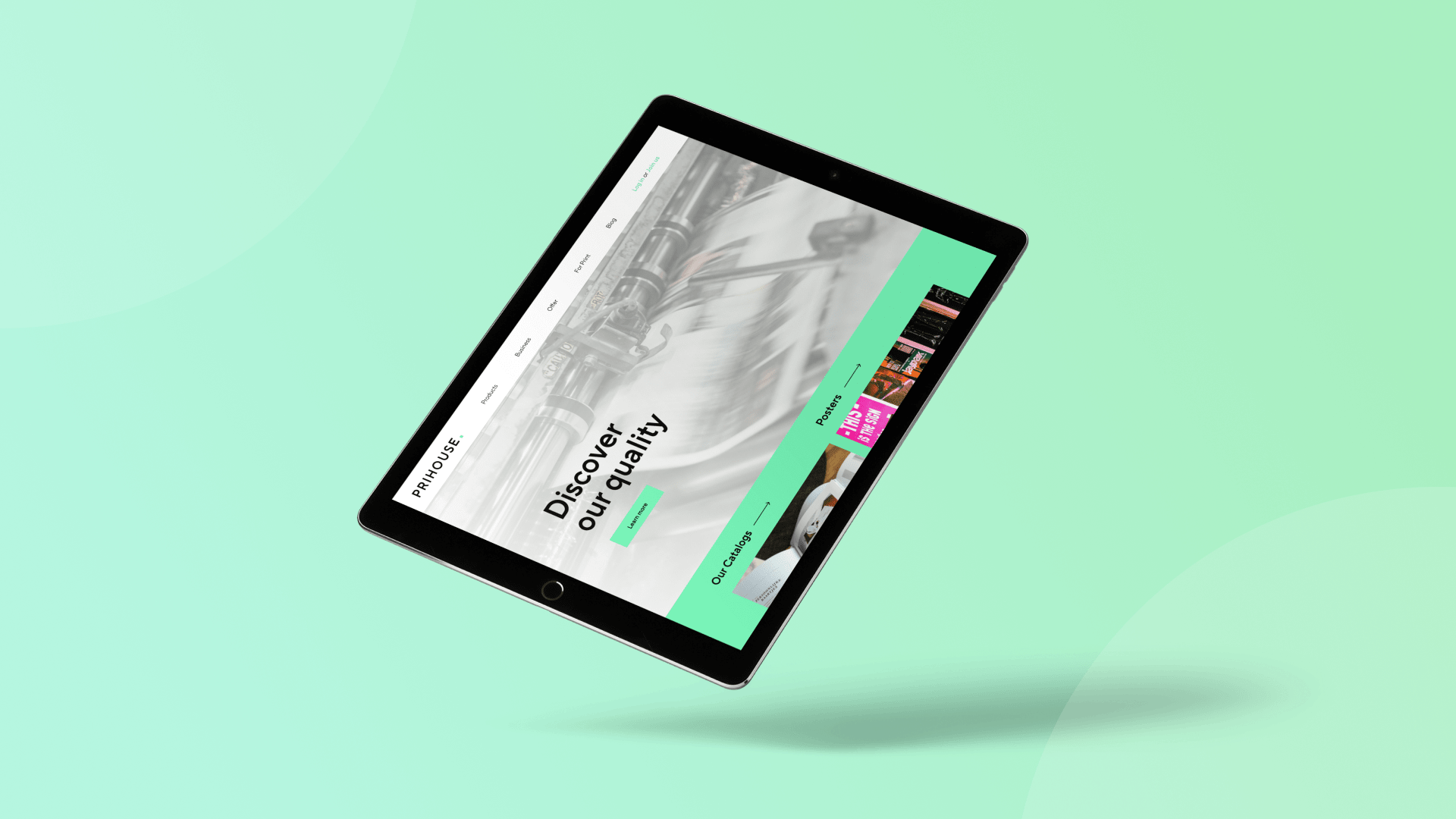Business solutions that helped our partner grow their business in post-pandemic conditions
When two giant competitors hit the market, our client needed to take immediate and effective action in order to save their business. Despite having over twenty-five years of experience, they struggled with adjusting their business model to post-pandemic market conditions. Read on to find out what steps Boldare consultants took to help them resolve their issues and grow in the new competitive environment.

Table of contents
Disclaimer: All the information relating to the client is protected by an NDA agreement, therefore we have avoided using names that could identify them. For the purposes of this case study, we’ll refer to them as ‘the client’.
The client
The client is one of the leading online printing companies within the borders of the European Union. They’ve been on the market for over twenty-five years, which has helped them to build long-term partnerships with resellers and build customer trust. They created customized software for the customers to book their services online, via website or mobile app. The business had been stable until 2020, when COVID-19 triggered unexpected market turbulence. Let’s look at the problems it caused for the client.
The problem
The COVID-19 pandemic caused a major shift in customers’ needs and behaviors. Staying home, people started to deal with their lives online. Almost instantly, trade shows, business trips, concerts, exhibitions - everything was canceled. People couldn’t leave their homes so they started to order online and had goods delivered directly to their homes. The e-commerce market was suddenly elevated, customer needs evolved, and competition in the polygraphic sector increased. New online printing giants took the market by storm, offering competitive prices and short delivery times with advanced user-friendly online shops.
The client had to adjust their online platform as well as their business plan in order to beat the competition. They needed innovation, digital transformation, and a bit more agility to win the fight. They approached Boldare looking for our business advice and consulting. That was the beginning of our partnership.
The process
The process of finding the right solutions to our client’s issues required deep research and analysis of their situation in various contexts. Below you can read about our approach and actions taken. Throughout the whole process, we have used our practical knowledge and experience of applying the lean startup methodology and agility. The client received instructions on how to implement these principles into their daily work and how to make the most of them not only at the moment of the transition but also in the future.
Setting business goals for the process
The business goals we set with the client were mostly focused around increasing income from more profitable segments and getting new customers on board. This is how we formulated the goals:
- to increase the number of customers and their engagement with the client’s platforms
- to grow the number of orders
- to focus on high-margin customers
- to improve the customer retention rate
- to reach customers from foreign markets
After setting these goals, we needed to conduct some research and analysis in order to prepare an effective strategy.
Customer research
Years of experience has shown us there are no universal solutions. Before recommending anything to the client, we needed to find out the core problems influencing their sales.
To do that, we decided to talk to customers and figure out what their real issues were.
We chose representatives from four different market segments, two existing and two completely new. We asked them what was important to them when using online printing services. We asked if any issues arose when they used our client’s services. Most of the customers said they experience various problems, including:
- difficulties with placing an order
- long delivery time
- delays in delivery
- uncertainty regarding quality of printing materials
- communication issues (poor customer service)
- limited offer
This information led us to draw up some initial conclusions and recommendations. We discovered some key areas for improvement: customer service, delivery times, print quality.
Analyzing sales channels
From analyzing customers’ replies we moved to analyzing our client’s sales channels. What we found was that the majority of the client’s income comes from sales done via their website. Moreover, we noticed that one particular sales channel cannibalizes the main channel. This problem was further complicated by an inefficient discount system.
We also noticed that the client’s sales team sells more premium products and high-margin products than the website, so we recommended scaling it in order to increase income and single order value.
Analyzing the business model, pricing policy and competition
As a next step, we dug deeper into our client’s business model. We used a business model canvas tool to discuss their value proposition, customer segments, relationships, costs and income sources.
We took a closer look into how much income was being generated by particular customer segments, which were:
- advertising/printing agencies
- companies
- resellers
It showed us that the client took a high business risk by depending mostly on just one customer segment. Moreover, all segments were subject to the same macroeconomic trends.
When it came to prices, the client charged higher nominal prices than their competitors (and this did not bring them a higher margin). They offered special discounts, but only for two of their segments who were actually ‘eating’ their market. Such a pricing policy wasn’t beneficial for our client, it harmed their business in many ways.
We also analyzed the client’s competition, looking at four other online printing platforms’ offers and sales channels. The conclusions were:
- the client set the highest prices on the market (as much as twice as high as competitors);
- the client set high prices on printing for e-commerce (in other platforms these services were up to three times cheaper);
- the clients set a minimum order price at a level as much as five times higher than the minimum order price offered by competitors,
Final recommendations
The whole process was based on a series of business conversations, analysis, consulting and workshops. After analyzing the process outcomes, we offered the client the following solutions:
- adjusting business model to the current market requirements;
- opening to new market segments and offering services to new user groups\ building client community;
- balancing financial risk linked to cooperation with the most risky customer segments;
- introducing new solid and competitive pricing policy;
- adjusting prices and offer to new market segments;
- using market opportunities that arose during the COVID era (i.e. trends like the growing e-commerce market).
The client admitted that the process we conducted “opened their eyes” to many aspects that they had not previously recognized. They discovered business areas that required instant attention, adjustment, and major changes. They also found areas with potential for innovation and growth.
The client got very specific instructions on how to implement these changes into their business and so equipped, they went into action. We also helped them with digital product development (improving their main platform for order placement and building a customized tool for users to be able to create their own awesome designs). Now, they are still improving the business and products, getting further and further towards the goals we set together.
Share this article:







